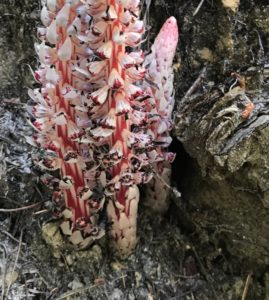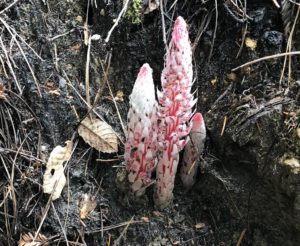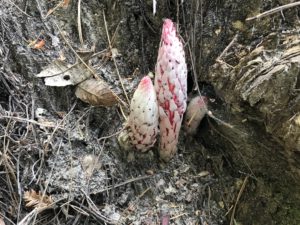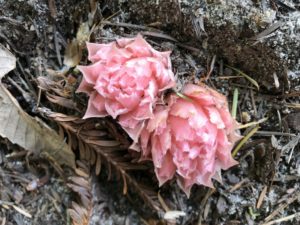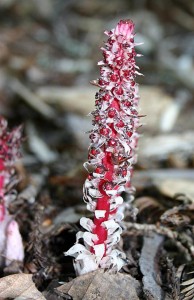A rare plant has bloomed near Rick’s and my home in Anchor Bay, last year and this year too. We took wildflower aficionados Mel Smith and Linda Bostwick to see the spiky maroon and white flower last weekend. There, growing in sandy soil and forest duff, was a Sugarstick, Allotropa virgata.
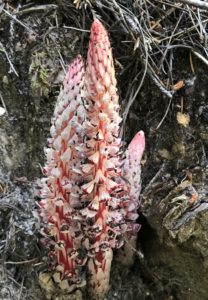 Here's a closer view of the flowers - they are quite beautiful.
Here's a closer view of the flowers - they are quite beautiful.
Sugarsticks, also called Candysticks, are parasitic plants. They feed on fungi in the soil. The two places I’ve found them have Matsutake mushrooms in the fall. If you have known Matsutake spots, look and see if you might also have Sugersticks. Last year’s flowers are still standing as leathery thin stalks.
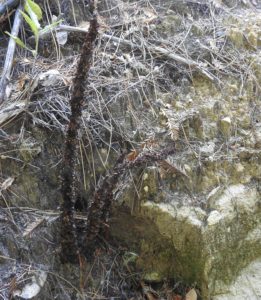 Interesting that they seem to be associated with Matsutake fungus!
Interesting that they seem to be associated with Matsutake fungus!
We have had cool, foggy weather on the Mendonoma coast this week. The sun finally appeared mid-afternoon. There are lots of people here with their fancy cars, as there is a car show on Saturday at Gualala Arts. It's free and lots of fun. Here is a link to the Gualala Arts Center about the event: http://gualalaarts.org/2018/07/10th-annual-gualala-arts-auto-show-8th-annual-pinewood-derby/

